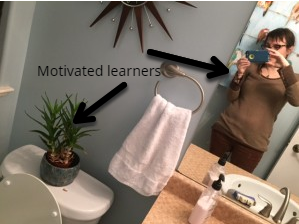To be honest, I just do not have time to effectively do it, although it is on my “Pedagogical Bucket List”.
In my experience, effective use of any technology does not just materialize out of sheer wanting. It takes planning— well-thought out planning— to make successful integration happen. Is it fair to say that we all agree that simply air-dropping technology into a classroom or practice does not guarantee that learning will transpire?
A major component to technological success is providing prompt and specific feedback to students who are engaging in whatever tech-driven practice, as mentioned in this week’s readings (Bates, 2010). He also acknowledges that when engaging in more technology based delivery models, that more time is required on the front end of the course, as compared to face-to-face models. As a student, teacher, parent and partner, I do not feel like I would be able to provide such feedback, nor commit to the time required to just set Social media up and maintain it, once it is set up.
Not having time has been an issue I have had since starting this Masters, in fact. It is incredibly frustrating to be learning and percolating about so many great ideas, yet not to have time to see these ideas to fruition! For example, I have attempted to start student blogging within my classes this semester, but have been drowning in my own marking, homework and personal life so the blogs have not hit the bullseye that I was hoping for.
But alas! I will not be a Masters student forever, and nor will my children be little forever (I am really hoping that I stay married, however!!) . Time will eventually come, and when it does, I look forward to jumping on the Twitter train with my classes. I am not as keen to Facebook with students as I personally view Facebook as one’s window to their personal life. I deliberately choose to not friend students, nor will I accept their friend requests (at least until they are many years out of graduation AND if I truly liked them). Twitter for me is the opposite platform: it is where I keep myself professionally aware and it is where I nurture my PLN. I see tremendous value in teaching students how to create positive digital footprints within Twitter. I believe that there is educational potential in the LinkedIn, as well, however, I am very inexperienced within that platform.
It is worth noting that Darren Laur, renowned Internet safety expert, has recently just created a new presentation geared to Grade 11 and 12 students, to help teach them about how to leverage their social media presence into future opportunities (entrance into post-secondary, scholarships, jobs…). I do believe that we have an obligation to our students to prepare them for the demands of a digital world.
The magic just doesn’t happen, however.
It takes time.


